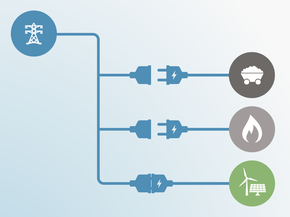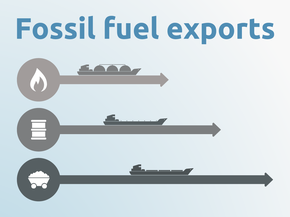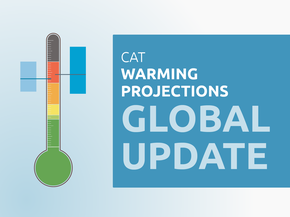Assumptions
Global Warming Potentials
Previous assessments of the Climate Action Tracker used the global warming potentials (GWPs) from the IPCC’s Second Assessment Report (SAR). For this assessment we have updated all figures and time series to GWPs from the Fourth Assessment Report (AR4).
Historical emissions
Historical emissions for the years 1990, 1996, 2000 and 2005 were taken from the latest UNFCCC inventory (UNFCCC, 2014) and converted to AR4 based on a yearly AR4/SAR factor for Costa Rica estimated with gas by gas data from Gieseke & Gütschow (2018). For 2012, we used data from the Third National Communication (Ministerio de Ambiente y Energía, 2014) and the First Biennial Update Report (BUR). We interpolated for the years in between. In its Third National Communication and First Biennial Update Report, Costa Rica reported its emissions following the IPCC 2006 guidelines, meaning that emissions from Land Use and Forestry are reported as part of the AFOLU (Agriculture, Forestry, and Land Use) category. The CAT analysis requires historical data for LULUCF emissions. We estimated LULUCF emissions for 2010 and 2012 by recalculating the values from the detailed AFOLU sectoral emissions. Updated values for emissions in 2005 and 2010 were provided in the BUR, but because there are no details on the AFOLU sector, we could not use these updated values.
Pledge and NDC
Costa Rica’s NDC postponed the carbon neutrality target to 2085 and pledged to keep emissions below 9.37 MtCO2e by 2030, including LULUCF. Costa Rica’s NDC also expresses this target as ‘25% reduction from 2012 levels’—which according to our estimates is lower than their absolute target. In its NDC, Costa Rica also indicates a trajectory to its 2030 target with emissions of 10.9 MtCO2e in 2021 and emissions of 1.19 tCO2e/cap for 2050 and -0.27 tCO2e/cap by 2100, including LULUCF. These targets are presented in global warming potentials from the IPCC’s second assessment report (SAR). The CAT presents all targets excl. LULUCF and global warming potentials (GWPs) from the IPCC’s fourth assessment report (AR4). We have estimated the 2021 target as 13.9 MtCO2e excl. LULUCF in GWPs from AR4. For the 2030 target, we have estimated a range between 13.7 MtCO2e and 15 MtCO2e in 2030 excl. LULUCF and in GWPs from AR4 based on the two interpretations—the absolute number and the reduction percentage. Our estimations of the long-term target result in a range between 8.9 MtCO2e and 12.3 MtCO2e excluding LULUCF in 2050. We use projections for LULUCF emissions from the First Biennial Update Report (Ministerio de Ambiente y Energía, 2015a). These LULUCF projections show a large sink in 2021 and an even larger one in 2030 that previous CAT estimations, meaning that Costa Rica can emit more in other sectors and still achieve its target including LULUCF. For the long-term pathway we have assumed a range for LULUCF emissions given the absence of national projections. We assume the lower end of LULUCF emissions from 2012—the last historical available year from the BUR—and the higher end as LULUCF emissions from 2030—the last available year from the BUR. We assume these two different ends of the range as the is uncertainty about LULUCF emissions. Efforts—including a REDD+ strategy—exist to reduce emissions in the LULUCF. Nevertheless, a national study (Sancho, Rivera and Obando, 2015), which estimates emissions from LULUCF sector by examining the forest compositions and historical trends, projects that the LULUCF sink will start to shrink after 2029 and emissions from this sector will become positive in 2050.
Current policy projections
Our current policy projections are based on the Conservative baseline scenario from the First Biennial Update Report (BUR) (Ministerio de Ambiente y Energía, 2015a) and bottom up estimations of Law 9518 from 2018. The conservative baseline scenario from the first BUR includes only actions or projects at a sector or economy wide level that are already implemented or which have received a first investment that makes them irreversible (Ministerio de Ambiente y Energía, 2015a). We have estimated potential emission reductions from law 9518 on private vehicles by estimating a range on private electric vehicle market penetration. The higher end of the range was estimated by linearly interpolating the current share of electric vehicles in the LDV fleet and the expected amount of electric vehicles expected by the government in 2022 (Artavia, 2017). We extended the trend linearly until 2030. We estimated the lower end of the range by assuming that private electric vehicle penetration resulting from the financial and non-financial benefits from Law 9518—including benefits on VAT, import tax, consumption tax, ownership tax, company tax, circulation, parking, and labelling of electric vehicles—will follow a logistic curve. This, as market penetration and diffusion of other technologies including diesel cars has been observed to follow a logistic path (Rogers, 1971; Cames and Helmers, 2013; Roedenbeck and Strobel, 2014; ACEA, 2015). From the EV penetration curves under linear and logistic assumptions we calculated the emission reductions by estimating the total amount of conventional vehicles that could be replaced by electric ones. We then multiply these totals by average Costa Rican emission factors by vehicle type. We used emission factors and historical fleet numbers from the Ministry of Public Infrastructure and Transport (Ministerio de Obras Públicas y Transportes, 2017), growth projections for the Costa Rican fleet from Mezger (2016), activity projections from the ICCT roadmap model (ICCT, 2017) and emission factors from the National Energy Plan (Ministerio de Ambiente y Energía, 2015c).
Further analysis
Latest publications
Stay informed
Subscribe to our newsletter







